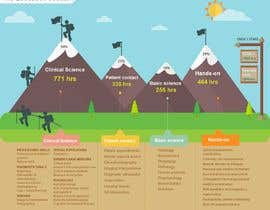Preserving proper pose isn't nearly sitting up directly; it has to do with straightening your body in a way that sustains your back and lowers the danger of neck and back pain. The method you sit, stand, and move throughout the day can significantly influence your spinal health. But just how exactly can you guarantee excellent positioning regularly, even throughout busy days filled with numerous activities? Allow's dig deeper into the subtle yet impactful modifications you can make to your daily regimen to keep your back delighted and healthy and balanced.
Significance of Appropriate Pose
Correct posture is critical in keeping a healthy back and protecting against discomfort. When you rest or stand with good stance, your spinal column remains in positioning, reducing strain on your muscular tissues, tendons, and joints. This positioning allows the body to distribute weight evenly, stopping excessive tension on specific areas that can bring about discomfort and discomfort. By maintaining your spine effectively lined up, you can additionally boost your breathing and food digestion, as slouching can press body organs and limit their performance.
Additionally, keeping good pose can improve your overall look and positive self-image. When you stand tall with your shoulders back and head held high, you exude self-confidence and show up more approachable. Great pose can additionally make you feel extra stimulated and alert, as it promotes appropriate blood flow and enables your muscles to work efficiently.
Including appropriate stance into your day-to-day routine, whether resting at a workdesk, strolling, or exercising, is important for avoiding neck and back pain and advertising general well-being. Keep in mind, a tiny adjustment in just how you hold on your own can make a substantial distinction in how you really feel and function throughout the day.
Common Postural Mistakes
When it involves preserving good stance, many individuals unknowingly make common blunders that can contribute to neck and back pain and pain. Among the most prevalent errors is slumping over or hunching over while resting or standing. This setting places excessive strain on the back and can result in muscle mass imbalances and discomfort over time.
One more typical blunder is overarching the reduced back, which can squash the all-natural contour of the back and trigger discomfort. Furthermore, crossing legs while sitting may feel comfy, but it can produce a discrepancy in the hips and hips, bring about postural problems.
Making use of a pillow that's as well soft or also solid while resting can also affect your positioning and add to pain in the back. Lastly, frequently craning your neck to consider displays or adjusting your position regularly can strain the neck and shoulders. Being mindful of these typical postural mistakes can aid you keep much better placement and lower the threat of pain in the back.
Tips for Correcting Positioning
To enhance your alignment and decrease back pain, it's important to concentrate on making small adjustments throughout your day-to-day routine. Begin by bearing in mind your pose. When sitting, ensure how to relieve lower back pain are flat on the flooring, your back is straight, and your shoulders are unwinded. Prevent slouching or leaning to one side. Usage ergonomic chairs or cushions to sustain your reduced back.
When standing, disperse your weight equally on both feet, maintain your knees a little bent, and embed your pelvis. Engage back pain causes to sustain your spine. Take breaks to stretch and walk around if you have a sedentary work. Include workouts that strengthen your core and back muscle mass, such as planks or bridges.
While resting, make use of a pillow that sustains the natural contour of your neck to keep correct spine alignment. Avoid sleeping on your belly, as it can strain your neck and back. By bearing in mind these pointers and making small adjustments, you can gradually remedy your alignment and minimize pain in the back.
Final thought
Remember, maintaining great stance is vital to preventing neck and back pain and advertising spinal health and wellness. By being mindful of your alignment, dispersing weight evenly, and involving your core muscular tissues, you can minimize pressure on your back and reduce the risk of discomfort and injury. Integrate ergonomic assistance, take regular breaks to stretch, and enhance your core and back muscular tissues to preserve proper placement throughout the day. Your back will certainly thanks for it!
